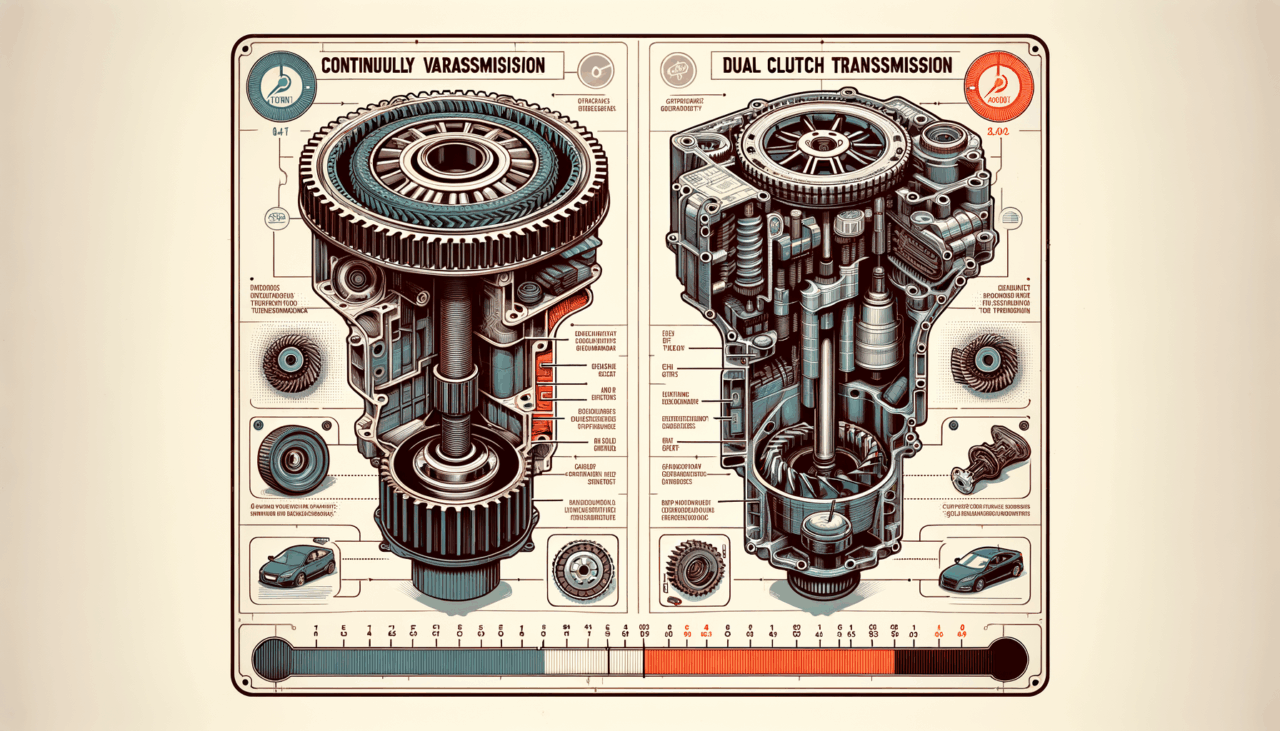CVT vs. DSG: Which Transmission Lasts Longer?
In the rolling hills of Tuscany, where the roads wind like the threads of history, my grandfather used to tell tales of machines that mirrored the complexity and efficiency of nature itself. Among the stories of old Fiats and Vespas, the evolution of car transmissions has always been a subject of fascination. Today, we delve into the differences between two modern marvels of automotive engineering: the Continuously Variable Transmission (CVT) and the Direct Shift Gearbox (DSG). Which one stands the test of time better, offering not just performance but longevity?
Characteristics of CVT
The CVT is a marvel of modern engineering, designed to provide seamless and efficient driving experiences. Unlike traditional transmissions, the CVT doesn’t have fixed gears. Instead, it uses a system of pulleys and a belt to offer a limitless range of gear ratios. This design allows the engine to run at its most efficient RPM for a range of speeds, thereby optimizing fuel efficiency.
Key Features of CVT:
– Smooth Acceleration: With no gear shifts, acceleration is silky smooth, akin to a gondola gliding through Venice’s canals.
– Fuel Efficiency: By maintaining optimal engine speed, CVTs can enhance fuel economy.
– Simplicity: Fewer moving parts mean there’s less that can go wrong, theoretically increasing durability.
– Responsive in City Driving: Ideal for stop-and-go traffic, akin to navigating through the bustling streets of Rome.
Characteristics of DSG
DSGs, on the other hand, represent a fusion of manual and automatic transmissions, embodying the spirited precision of a maestro conducting an orchestra. A DSG uses two separate clutches for odd and even gear sets, allowing for pre-selection of the next gear. This results in lightning-fast gear changes without the interruption of power flow.
Key Features of DSG:
– Rapid Gear Shifts: Like the swift strokes of a painter in Florence, DSGs provide near-instantaneous gear changes.
– Performance-Oriented: Offers the best of both worlds—efficiency of an automatic with the control of a manual.
– Enhanced Driving Experience: Provides a more dynamic connection with the vehicle, ideal for those winding Amalfi Coast drives.
– Complex Design: More components mean potential for increased maintenance needs.
Comparative Table: CVT vs. DSG
| Feature | CVT | DSG |
|---|---|---|
| Smoothness | Exceptionally smooth acceleration, no gear shifts | Smooth but more noticeable shifts compared to CVT |
| Fuel Efficiency | Generally higher due to optimal engine speed | High, but slightly less than CVT due to gear pre-selection |
| Complexity | Simpler design with fewer moving parts | More complex with dual-clutch system |
| Maintenance | Lower maintenance needs given fewer parts | Higher potential maintenance due to complexity |
| Driving Experience | Ideal for city driving and comfort | Suited for performance and spirited driving |
| Durability | Generally durable, though depends on belt quality | Durable but depends on clutch maintenance |
| Cost | Typically lower initial cost and maintenance | Higher cost due to advanced technology |
Which Transmission Lasts Longer?
In the heart of this debate lies a question that echoes through the ages: simplicity versus complexity. The CVT, with its elegant simplicity, tends to have a longer lifespan in theory, primarily due to its fewer moving parts. However, its longevity heavily relies on the quality of the belt, the Achilles’ heel of this design.
Conversely, the DSG’s complexity brings with it a need for meticulous maintenance, particularly concerning the clutches. When well-maintained, a DSG can offer a long service life, rewarding the driver with performance that ages like fine wine.
Final Thoughts:
As I reminisce about the wisdom imparted by my grandfather, I am reminded that the choice between CVT and DSG is akin to choosing between the harmony of a sonnet and the boldness of a fresco. Each has its place and purpose. For those valuing seamless efficiency and simplicity, the CVT is a worthy companion. Meanwhile, the DSG beckons to those who crave performance and precision.
Ultimately, the longevity of a transmission depends not just on engineering but on care. Like the vineyards of Chianti, a little attention and maintenance can ensure that both CVT and DSG provide years of faithful service, turning every drive into a journey through the storied landscapes of Italy.

Comments (0)
There are no comments here yet, you can be the first!